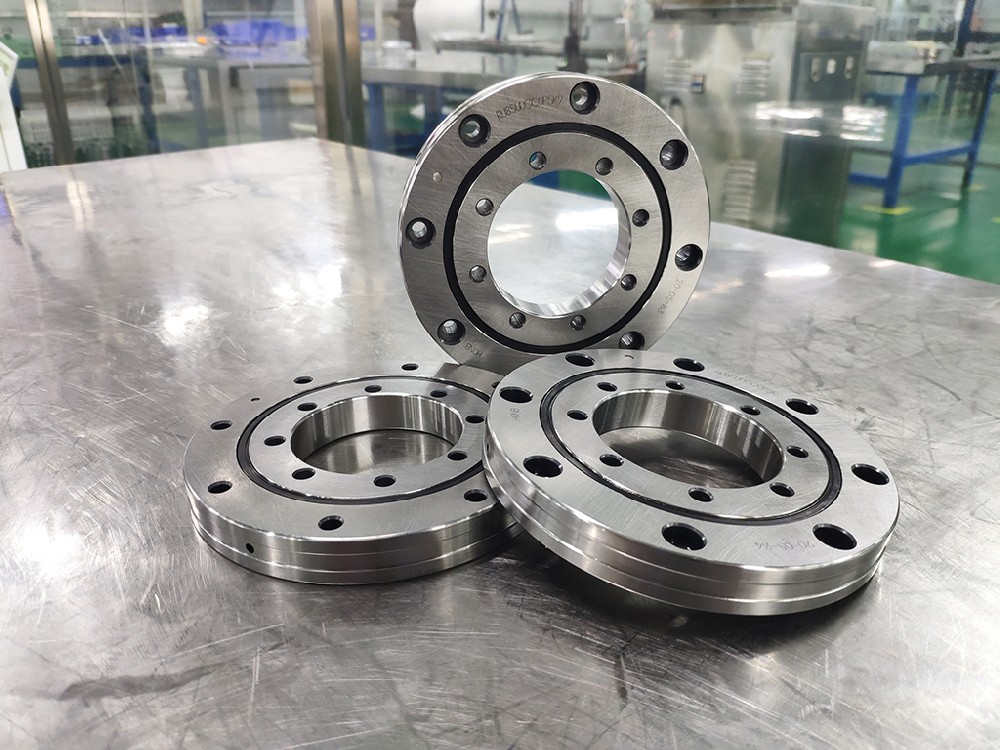Tapered roller bearings are separate bearings. The inner and outer rings of the bearing have tapered raceways. This type of bearing is divided into different structural types such as single-row, double-row and four-row tapered roller bearings according to the number of rows of rollers installed. Single row tapered roller bearings can bear radial loads and axial loads in one direction. When the bearing is subjected to a radial load, an axial component force will be generated, so another bearing that can withstand the axial force in the opposite direction is needed to balance it.
Tapered roller bearings are separate bearings. The inner and outer rings of the bearing have tapered raceways. This type of bearing is divided into different structural types such as single-row, double-row and four-row tapered roller bearings according to the number of rows of rollers installed. Single row tapered roller bearings can bear radial loads and axial loads in one direction. When the bearing is subjected to a radial load, an axial component force will be generated, so another bearing that can withstand the axial force in the opposite direction is needed to balance it.
The structure of tapered roller bearings:
The type code of tapered roller bearings is 30000, and tapered roller bearings are separate bearings. Under normal circumstances, especially within the size range involved in GB/T307.1-94 "Rolling Bearings Radial Bearing Tolerances", the outer ring and inner components of tapered roller bearings are 100% interchangeable.
The angle of the outer ring and the diameter of the outer raceway have been standardized and specified as the outer dimensions. Changes during design and manufacturing are not allowed. As a result, the outer ring and inner components of tapered roller bearings can be interchanged worldwide.
Tapered roller bearings are mainly used to bear combined radial and axial loads, mainly radial loads. Compared with angular contact ball bearings, they have large load-bearing capacity and low limit speed. Tapered roller bearings can withstand axial loads in one direction and can limit the axial displacement of the shaft or housing in one direction.
Installation of tapered roller bearings:
Adjusting the axial clearance For the installation axial clearance of the tapered roller bearing, the adjustment nut on the journal, the adjusting washer and the thread in the bearing seat hole can be used, or the preload spring can be used to adjust. The size of the axial clearance is related to the arrangement of the bearing installation, the distance between the bearings, and the materials of the shaft and the bearing seat, and can be determined according to the working conditions.
For tapered roller bearings with high loads and high speeds, when adjusting the clearance, the impact of temperature rise on the axial clearance must be considered, and the reduction in clearance caused by the temperature rise must be estimated. In other words, the axial clearance Adjust it appropriately.
For bearings with low rotation speed and vibration, they should be installed without clearance or installed with preload. Its purpose is to make the rollers and raceways of the tapered roller bearing have good contact, distribute the load evenly, and prevent the rollers and raceways from being damaged by vibration and impact. After adjustment, check the axial clearance with a dial indicator.

 ADD:Chuangye Road, Konggang Industrial cluster district, Luoyang city, Henan province, China
ADD:Chuangye Road, Konggang Industrial cluster district, Luoyang city, Henan province, China
 Phone:18838816321
Phone:18838816321
 Tele:0379-63086103
Tele:0379-63086103
 QQ:1553564138
QQ:1553564138
 WeChat:HONBbearing02
WeChat:HONBbearing02